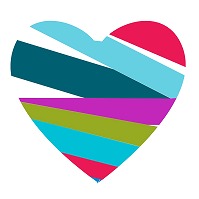Before I go any further, I want to point this out: As a white person in a heterosexual marriage living without religion, I am protected from a lot of these issues. I certainly don’t face the obstacles that queer Muslims of color, Latinx people celebrating Latin night at Pulse, or my friend Benjamin who used to frequent Pulse do on a regular basis. I recognize that privilege as I write this.
I’m having some feels today about Pulse and the LGBTQIA+ community.
This time last year, I hadn’t fully come out. Hell, I didn’t understand my gender identity yet.
Hubs and I were on a road trip from where we live to California, taking our extra car to my sister. The day before the Pulse shooting, we stopped in Laramie, Wyoming, to visit the Matthew Shepard bench.

I had to stop there. I wrote the following on Facebook:
In the last 20 years, so much has happened to push ahead equal rights for the LGBTQIA community, but this one sticks in my head the most. I was ten when it happened and I just remember crying for days. No one deserves to be treated the way Matt was. I’ve seen his mother speak and it’s clear that his death was a loss to our world.
We sat there for a while. I cried and sent good thoughts into the world. I wanted to wish so badly that we were past these kinds of acts.
To wake up literally the next day and have T tell me the little we knew about the attack in the morning… it was surreal. We know now that the Pulse shooting was the deadliest mass shooting in the United States. 49 people were murdered and nearly 70 wounded.
As I read more, it felt like I couldn’t breathe. I couldn’t place my feels or give them names at the time. I’m still not sure that I can. Grief and sorrow were there. Fear was definitely there.
Knowing that I could easily be at Pulse should I have been in Orlando during Pride? That was there, too.
And then, because of my background in religious studies and Islam, I feared the backlash that came – the bigotry against Muslims in addition to the bigotry against our community.
Most of all, I was feeling harmed. It was the first time that I felt I was a part of the queer community.
Clubs and Pride – these are supposed to be safe places for us.
Pride is about celebrating who we are. It’s also about remembering the struggles of those who came before us in the fight for LGBTQIA+ rights, like Marsha P Johnson and Sylvia Rivera. We have to figure out how to carry on the legacy of the lives lost to hate.
This is why we must take action when we see something wrong. Volunteer. Donate. Raise funds. Call out others on their hate. Use your privilege to elevate marginalized voices. Vote against hateful rhetoric. Educate others. Give blood if you’re able.
Don’t allow hatred to blur how you see the world. Let it, instead, push you to love more, laugh harder, and fight for each other.
Today, let’s remember those who were murdered in a safe space, and push progress forward in their names:
Stanley Almodovar III
Amanda Alvear
Oscar A Aracena-Montero
Rodolfo Ayala-Ayala
Antonio Davon Brown
Darryl Roman Burt II
Angel L. Candelario-Padro
Juan Chavez-Martinez
Luis Daniel Conde
Cory James Connell
Tevin Eugene Crosby
Deonka Deidra Drayton
Simon Adrian Carrillo Fernandez
Leroy Valentin Fernandez
Mercedez Marisol Flores
Peter O. Gonzalez-Cruz
Juan Ramon Guerrero
Paul Terrell Henry
Frank Hernandez
Miguel Angel Honorato
Javier Jorge-Reyes
Jason Benjamin Josaphat
Eddie Jamoldroy Justice
Anthony Luis Laureanodisla
Christopher Andrew Leinonen
Alejandro Barrios Martinez
Brenda Lee Marquez McCool
Gilberto Ramon Silva Menendez
Kimberly Morris
Akyra Monet Murray
Luis Omar Ocasio-Capo
Geraldo A. Ortiz-Jimenez
Eric Ivan Ortiz-Rivera
Joel Rayon Paniagua
Jean Carlos Mendez Perez
Enrique L. Rios, Jr.
Jean C. Nieves Rodriguez
Xavier Emmanuel Serrano Rosado
Christopher Joseph Sanfeliz
Yilmary Rodriguez Solivan
Edward Sotomayor Jr.
Shane Evan Tomlinson
Martin Benitez Torres
Jonathan Antonio Camuy Vega
Juan P. Rivera Velazquez
Luis S. Vielma
Franky Jimmy Dejesus Velazquez
Luis Daniel Wilson-Leon
Jerald Arthur Wright
Stanley Almodovar III
Amanda Alvear
Oscar A Aracena-Montero
Rodolfo Ayala-Ayala
Antonio Davon Brown
Darryl Roman Burt II
Angel L. Candelario-Padro
Juan Chavez-Martinez
Luis Daniel Conde
Cory James Connell
Tevin Eugene Crosby
Deonka Deidra Drayton
Simon Adrian Carrillo Fernandez
Leroy Valentin Fernandez
Mercedez Marisol Flores
Peter O. Gonzalez-Cruz
Juan Ramon Guerrero
Paul Terrell Henry
Frank Hernandez
Miguel Angel Honorato
Javier Jorge-Reyes
Jason Benjamin Josaphat
Eddie Jamoldroy Justice
Anthony Luis Laureanodisla
Christopher Andrew Leinonen
Alejandro Barrios Martinez
Brenda Lee Marquez McCool
Gilberto Ramon Silva Menendez
Kimberly Morris
Akyra Monet Murray
Luis Omar Ocasio-Capo
Geraldo A. Ortiz-Jimenez
Eric Ivan Ortiz-Rivera
Joel Rayon Paniagua
Jean Carlos Mendez Perez
Enrique L. Rios, Jr.
Jean C. Nieves Rodriguez
Xavier Emmanuel Serrano Rosado
Christopher Joseph Sanfeliz
Yilmary Rodriguez Solivan
Edward Sotomayor Jr.
Shane Evan Tomlinson
Martin Benitez Torres
Jonathan Antonio Camuy Vega
Juan P. Rivera Velazquez
Luis S. Vielma
Franky Jimmy Dejesus Velazquez
Luis Daniel Wilson-Leon
Jerald Arthur Wright
Learn about the stories of those who lived through the shooting at DearWorld.org.
Consider donating to the onePULSE Foundation today.


